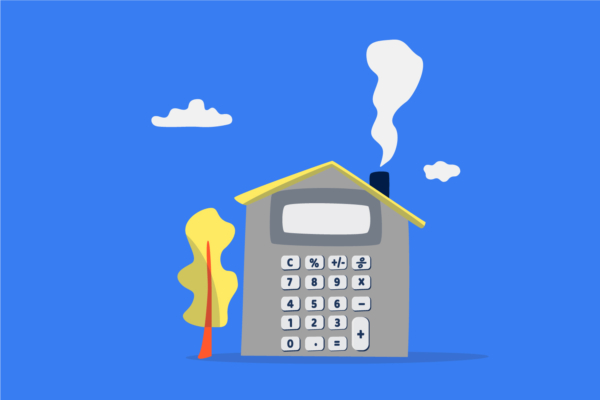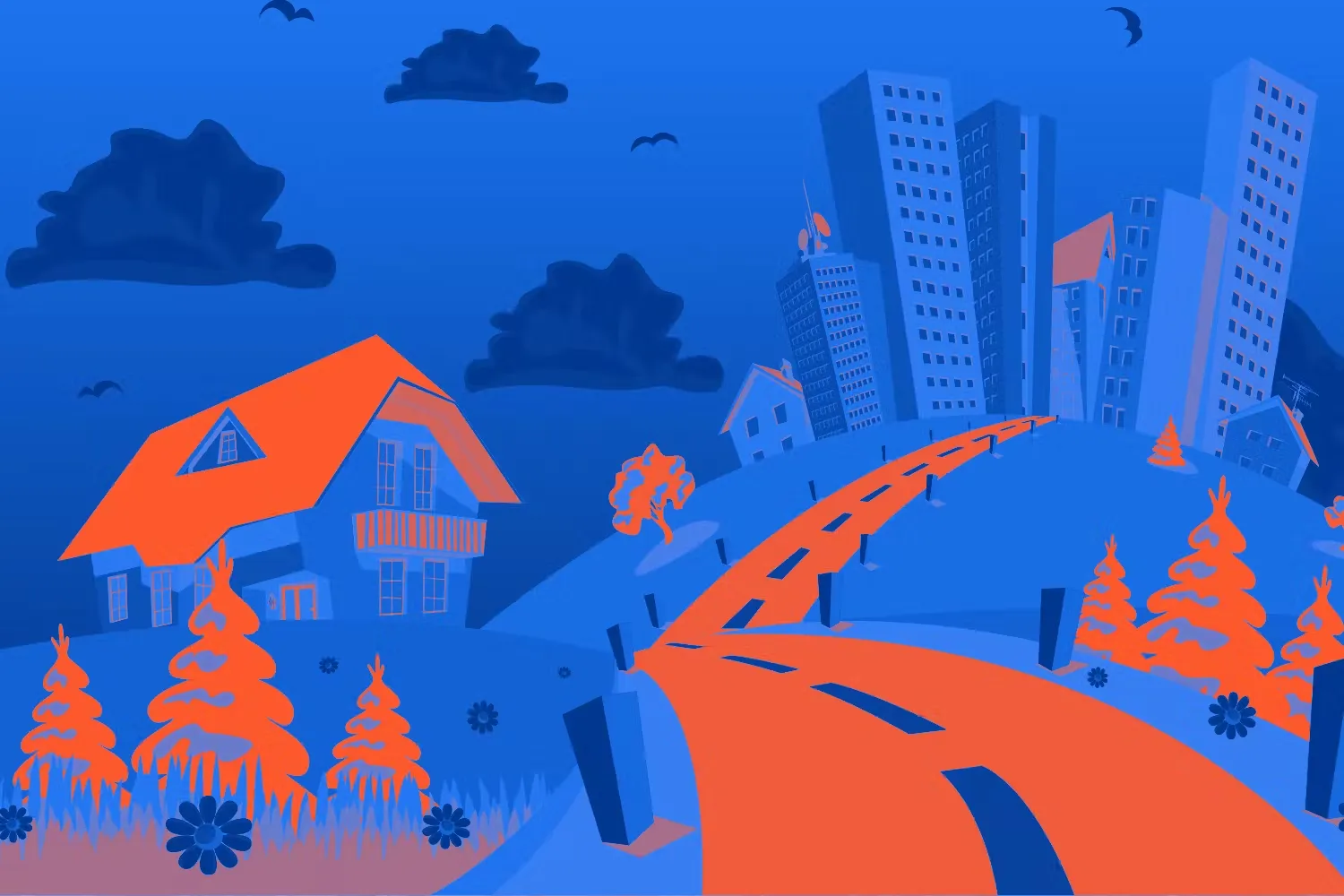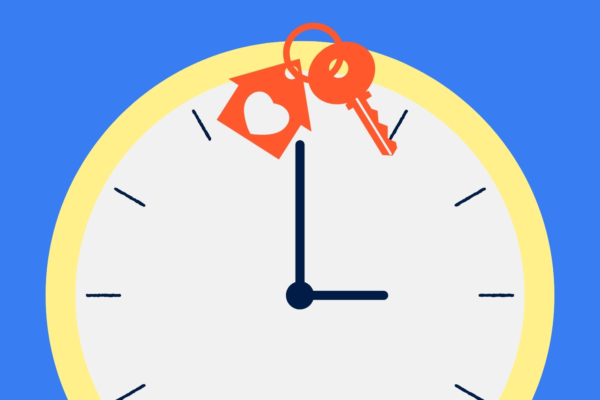
Guide to Homebuying: City vs Suburb

A house is one of the largest purchases most Americans will ever make. Location has huge implications for homeowners, with impacts on lifestyle and finances. In the Austin area, homeowners have three broad categories to choose from: urban, suburban, and somewhere in between.
If location is everything—how do you decide where to live? We’ll examine the pros and cons of each option to help you make a more informed decision when it comes to the debate over city vs. suburb.
Living in the Heart of the City
Living in urban Austin means different things for everyone. Maybe it brings thoughts of the downtown skyline from your window or walking to get coffee around the corner. You might think of fancy dinners on Friday nights, live music events, and Lady Bird Lake’s many trails.
Living in the heart of Austin has some serious perks—but there are also drawbacks to consider before you decide to sign the dotted line on a mortgage!
From Mortgages to Home Equity Loans
Our local, award-winning lending team is ready to help you begin today.
The Great:
- Public transportation. While Austin public transit is by no means as extensive as a major city like New York, living in the city center does make public transportation considerably more convenient. Taking the bus or tram is cheaper and usually less stressful than owning and driving your own vehicle. As a bonus, you don’t have to worry about finding parking.
- Close-by businesses. Austin is renowned for its culinary culture and the lovable peculiarity of many local businesses. It seems like a new restaurant, bar, or food truck pops up every week, so if you decide to live either in or close to downtown, the number of options available for you to visit (often on foot!) is almost limitless.
- More entertainment options. City dwellers have easy access to dozens of museums and numerous art and culture events every month. If you’re a fan of live music, there’s almost no better place to live than in the heart of the Live Music Capital of the World.
The Not-So-Great:
- Surging home values. The amenities of living in an urban area come at a price–that you may not be able to afford. The cost of single-family homes in central Austin have risen 177% over the past ten years—from an average of $212 per square foot in 2012 to $586 per square foot in 2022.
- Parking. If you’re not a fan of public transportation and prefer to get around in your own vehicle, parking in the metropolitan areas of Austin can be difficult to find. And if you do find a spot, regularly paying for parking can be a drain on your budget.
- Lower rated public schools. Austin ISD public schools in the downtown area usually have lower overall ratings than schools in the surrounding, more suburban areas of Round Rock, Leander, and Dripping Springs.
Living in the Suburbs
Purchasing a home in the more suburban communities on the outskirts of Austin can also have its advantages—it’s quieter, maybe a little slower. Bigger yards and white picket fences are certainly more common, and you can get a lot more “house” for your money. But living farther away from the hustle and bustle of the big city might not be the best fit for everyone!
The Great:
- More affordable home prices. The median home price in Austin city limits in 2022 was $624,000, while the median home price in the more suburban Bastrop and Caldwell counties was $405,500 and $329,000 respectively. If price is a limiting factor in your home buying journey, the suburbs might be for you.
- Family friendly. In comparison to living in a city, suburban communities are great for raising kids due to lower crime rates, less traffic, greater amounts of green space, and a better sense of community.
- Higher-rated schools. The more suburban towns surrounding Austin offer some of the best public school districts in the state. According to the Texas Education Agency, smaller cities like Bee Cave, Spicewood, Lakeway, Round Rock, Leander, and Dripping Springs have public schools that outperform the public schools found in central Austin.
The Not-So-Great:
- Fewer entertainment options. Unlike the vibrant cultural and business environment in the heart of Austin, suburban areas offer fewer options when it comes to restaurants, shops, and entertainment.
- A car is required. It’s almost impossible to walk anywhere safely outside the downtown Austin area. In the suburbs, a grocery trip or going out to eat usually requires a drive.
- More time in traffic. Commuting long distances is just a fact of suburban life. If you have to physically make it into the office every day, it might be worth calculating how much time and money you’d spend every week on a longer commute.
Living Somewhere in Between
While it might seem that your options in the Austin area are limited to a strict split between urban vs. suburban lifestyles, there are also many communities in and around Austin that can offer a bit of both. As Austin continues to grow, these in-between areas are growing pretty rapidly as well.
Although the in-between is, by nature, hard to define, a report by the Pew Research Center explored just what living in that in-between might mean.
The Great:
- More housing options. As you move away from downtown, the types of real estate available tend to diversify greatly. There are apartments, condos, and single-family homes to consider.
- Alternative schools. Outside of the heart of Austin, there are many (free) charter school options for parents who want to stay close to the city but also want to give their children’s education a boost.
- Biking is possible. In the not quite urban, not quite suburban communities in Austin, it’s still possible to get around without the need for a car. You might not be able to walk everywhere, but bike lanes connect almost all parts of the city, allowing residents outside of downtown Austin to enjoy the freedom of a car-less lifestyle.
The Not-So-Great:
- Real estate is still expensive. While you might have more housing options by expanding your search outside of the downtown area, buying a home anywhere in Austin is still significantly more expensive than if you moved all the way out to the “true” suburbs.
- Less stability. These areas tend to change the fastest. What might be a sleepy street in the corner of the in-between may be a part of the city in the next five years, or may be transformed by major development. Depending on how you look at it, this could be a bonus—or a major disadvantage.
Choose What’s Best for You
While there are advantages and disadvantages to living in urban, suburban, or in-between locations, the decision on where to buy a home will ultimately come down to your preferred lifestyle and daily experience. No matter what works best for you, Amplify Credit Union is here to support you in the search for your dream home.
Ready to get prequalified?
Apply today and start your journey toward your new home.

